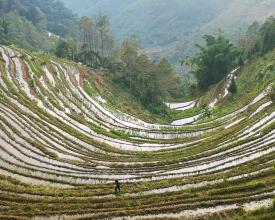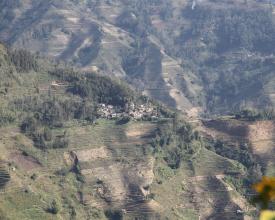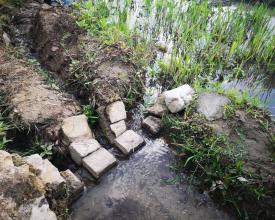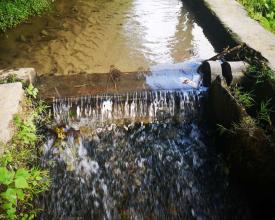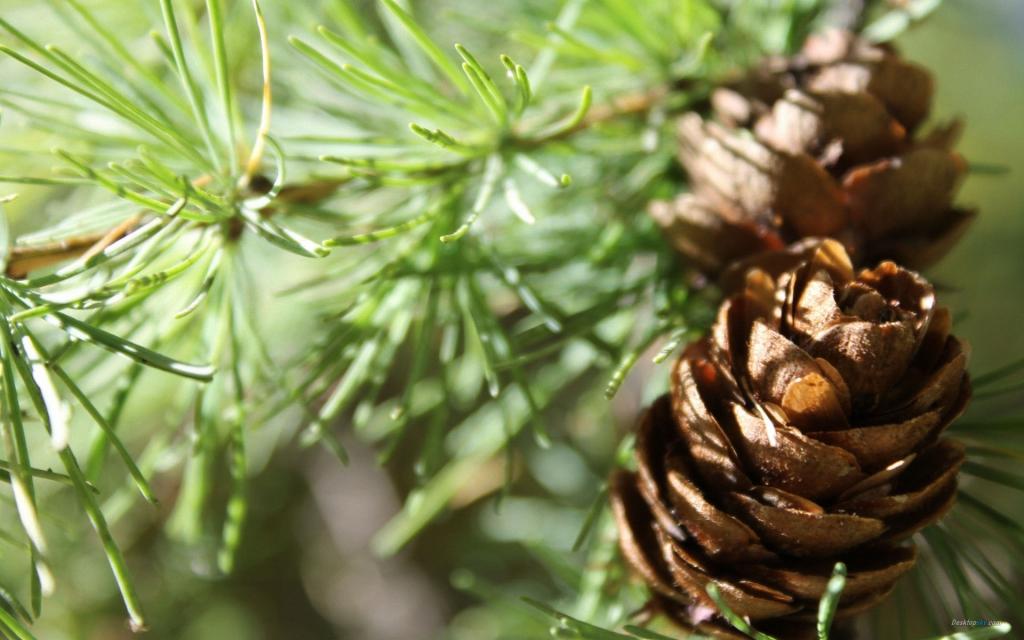Recuperación del sistema tradicional de gestión del agua-madera en el Paisaje Cultural de las Terrazas de Honghe Hani, Patrimonio Mundial, China
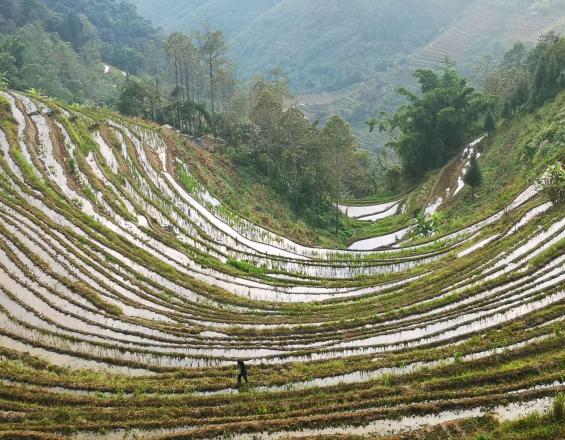
El Paisaje Cultural de las Terrazas de Arroz de Honghe Hani (HHRT), que abarca 16.603 hectáreas en el sur de Yunnan, fue inscrito en la Lista del Patrimonio Mundial en 2013 con arreglo a los criterios (iii) y (v). El cultivo del arroz tradicional ha moldeado profundamente el paisaje y ha dado forma a la cultura agrícola del pueblo Hani, que ha sostenido estas terrazas durante siglos. Sin embargo, los profundos cambios sociales hacen que la sostenibilidad de las terrazas sea incierta. Los desafíos ecológicos, combinados con la pérdida de conocimientos tradicionales, amenazan la conservación de este espectacular paisaje. Para hacer frente a estos retos, antes de la inscripción del sitio, la prefectura de Honghe desarrolló una estrategia centrada en la recuperación del sistema tradicional de gestión del agua basado en el concepto de agua-madera y la restauración del liderazgo tradicional. Mediante la investigación participativa y una asociación a varios niveles, esta iniciativa ha garantizado el suministro de agua a las aldeas y el sostenimiento de las terrazas, al tiempo que ha recuperado prácticas culturales ancestrales.
Contexto
Défis à relever
La provincia de Yunnan sufrió una sequía de tres años entre 2010 y 2013 (problema medioambiental) que afectó al riego agrícola, agravó la pobreza (problema económico) y provocó la desaparición de las actividades sagradas tradicionales relacionadas con el agua (problema social), que son fundamentales para la conservación de los valores patrimoniales de las terrazas de arroz de Honghe Hani.
Ubicación
Procesar
Resumen del proceso
La asociación prefectura-condado-municipio-aldea permitió una intervención a varios niveles en el HHRT (BB1). Dirigida por instituciones de investigación (independientes y gubernamentales) y con el apoyo de las comunidades locales, una investigación participativa sobre los valores del HHRT permitió comprender los problemas subyacentes que afectan al sistema de gestión del agua en el pueblo de Yakou, como ejemplo de los pueblos del HHRT (BB2). El reto medioambiental (la sequía) estaba directamente relacionado con un reto social (la pérdida de conocimientos tradicionales y de sistemas de gobernanza). El proyecto de restauración y el reconocimiento de los sistemas tradicionales de gobernanza y gestión ecológica dieron un valor añadido al arroz rojo, permitiendo aumentar el valor económico de los productos de las terrazas (BB4), lo que ayuda a abordar el reto económico (pobreza, emigración). Estos elementos constitutivos apoyaron y retroalimentaron el establecimiento de un sistema de legislación y regulación para la protección y el desarrollo del HHRT (BB5).
Bloques de construcción
Establecimiento de una asociación a varios niveles (prefectura-condado-municipio-aldea)
El sistema de asociación y gestión de prefectura-condado-municipio-aldea está bajo la dirección del departamento competente en la materia y coopera con instituciones técnicas y de investigación especializadas a diferentes niveles. Es una asociación innovadora adaptada localmente que resuelve la integración entre la gestión tradicional y la moderna, así como los requisitos internacionales y nacionales.La Administración de Gestión del Patrimonio Cultural Mundial de HHRT es responsable a nivel prefectural de la comunicación y coordinación entre las instituciones internacionales y nacionales. El Gobierno de Yuanyang es el organismo encargado de la protección y gestión del patrimonio. Se ha creado una unidad especializada, el Comité de Gestión del Patrimonio Mundial de Yuanyang HHRT, para hacer cumplir el plan de gestión y ocuparse de los asuntos cotidianos en el sitio del Patrimonio Mundial. La ciudad de Panzhihua y el Comité de la Aldea de Yakou se encargan de ejecutar las actividades de conservación y de coordinarse con las partes interesadas locales. Entre 2012 y 2018, la prefectura encargó una investigación sobre los atributos y el sistema de gestión del agua de la aldea de Yakou, con el fin de comprender sus problemas subyacentes. Los sectores del condado llevaron a cabo la restauración del sistema de gestión del agua-madera basándose en los resultados de la investigación.
Factores facilitadores
- Proceso de candidatura al Patrimonio Mundial.
- El establecimiento de la Administración de Gestión del Patrimonio Mundial Cultural de las Terrazas de Arroz de Honghe Hani, Prefectura Autónoma Honghe Hani y Yi, China, un sistema de gestión centralizado que coordina al gobierno y a las partes interesadas a diferentes niveles.
- Comité de Gestión del Patrimonio Mundial que pueda integrar a los sectores relacionados, asumiendo las tareas de gestión.
- Paralelamente, el establecimiento de una estrecha colaboración con instituciones de investigación favoreció la integración de una visión internacional y la experiencia local.
Lección aprendida
- Necesidad de cooperación multisectorial y participación multipartita: La participación de las comunidades locales promueve la protección y transmisión de los conocimientos indígenas relacionados con la conservación del entorno ecológico.
- Para mantener y restaurar el sistema de gestión del agua de HHRT, es necesario implicar a los sectores de la cultura y la naturaleza, el gobierno y los aldeanos, así como a las instituciones de investigación. Los proyectos dirigidos únicamente por el gobierno provocarían la pérdida de una fuerza motriz sostenible; la simple restauración de canales y bosques conduciría a agravar los conflictos de las organizaciones sociales locales.
- Necesidad de una investigación más amplia: El proyecto de recuperación de la gestión del agua-madera se lleva a cabo sólo en algunos pueblos. La distribución espacial global y la situación de la conservación siguen sin estar claras, por lo que es necesario realizar una investigación más amplia en las 82 aldeas tomando una aldea como unidad básica.
- Necesidad de un mecanismo de seguimiento y evaluación a largo plazo: es necesario evaluar los efectos del proyecto de recuperación de la madera acuática para proponer mejoras.
Investigación participativa en cooperación con instituciones científicas
La investigación participativa es esencial cuando faltan registros históricos y se introducen nuevos conceptos. La investigación en Yakou incluyó tres fases. La primera tenía por objeto conocer el lugar y su importancia. Como aldea típica con un paisaje bien conservado de "bosque-aldea-traza-sistema hídrico", Yakou fue seleccionada para representar el patrón paisajístico de la zona de Laohuzui. El trabajo de campo fue llevado a cabo tanto por el equipo de nominación (Academia China del Patrimonio Cultural) como por el equipo de investigación científica (Universidad de Yunnan). La segunda fase se centró en la restauración del sistema de riego de Yakou. Se realizaron entrevistas semiestructuradas a lugareños, trabajo de campo y restauración. Según los resultados de la investigación, el sistema tradicional de gestión del agua y los conocimientos relacionados surgieron como elementos clave en Yakou. Se repararon acequias, canales y bosques acuáticos para garantizar su uso a largo plazo, y los ancianos establecieron ceremonias tradicionales y un sistema de inspección. La tercera fase se centró en la mejora de la gestión del agua, para lo que los investigadores llevaron a cabo una investigación espacial del patrón de distribución de las parcelas de asentamiento y un análisis hidrológico mediante el Sistema de Información Geográfica, seguido de la reproducción de la experiencia en otras aldeas.
Factores facilitadores
- Las instituciones locales de investigación están familiarizadas con las condiciones locales. La investigación requiere la participación activa de la población y la comunidad locales para compartir conocimientos y experiencias, especialmente la historia oral y los conocimientos no reconocidos que son significativos y necesitan conectarse con las sociedades internacionales y nacionales.
- Combinación de la perspectiva internacional y la experiencia local.
- Cooperación entre instituciones de servicio público e institutos de investigación nacionales.
- Colaboración entre "institutos de investigación + organizaciones de servicio público + organización de aldeanos".
Lección aprendida
- La relación entre el uso de la tierra, la sociedad y la cultura es crucial en los estudios sobre el paisaje. Los retos medioambientales pueden ser la manifestación de cambios sociales y nuevas normativas (por ejemplo, los conflictos por la tierra y el agua pueden ser la cuestión subyacente).
- En el marco del PM, el Valor Universal Excepcional puede ser amplio y general, pero no se pueden descuidar las características detalladas porque son la clave para entender las características del lugar. En Yakou, la investigación de los distintos niveles de valores contribuye a la gestión del patrimonio antes y después de la inscripción como VUE. Ha mejorado el conocimiento de los gestores del yacimiento, la población local y los investigadores, y es un proceso continuo.
- La falta de registros históricos y documentación es un gran problema para la conservación de la cultura tradicional del agua. Se ha prestado demasiada atención a las vistas del paisaje, pero no la suficiente a las interacciones naturaleza-humanos que las produjeron.
- Los planes separados no pueden resolver la gestión a largo plazo: La gestión del agua, la gestión de la conservación y los planes maestros deben elaborarse de forma coordinada e integrada para su aplicación.
Restauración de bosques, canales y acequias tradicionales
La gestión del agua es el núcleo de la tecnología y la cultura en HHRT, incluidos los canales, la distribución y la regulación. El "agua-madera" es un sistema de riego dinámico basado en la equidad y en la relación nivel de agua/caudal. El pueblo hani construyó canales troncales para retener el agua de la cima de la montaña siguiendo los contornos topográficos. Según el terreno, los canales y ramales se construían verticalmente para canalizar el agua. Para distribuir el agua de forma racional, en el inicio de las terrazas y en pendientes suaves a lo largo de los canales verticales principales se sitúan bosques de agua que ajustan el flujo, la dirección y la velocidad del agua. Dependiendo del tamaño del campo, cada familia recibe el agua adecuada. Los derechos sobre el agua están garantizados por el Comité del Agua, encargado de gestionar los canales y los bosques y de resolver las disputas sobre el agua.
En Yakou, el abandono de los bosques y canales agravó los efectos de la sequía. Los gestores locales comunicaron a los aldeanos la importancia del sistema de agua-madera e investigaron por qué se había abandonado. Se reorganizó el Comité del Agua y se eligió a un Jefe del Agua, responsable de resolver las disputas y de la inspección y mantenimiento de los canales. Se encontró una nueva fuente de agua y se restauraron sistemáticamente los canales, acequias y bosques de agua, devolviendo el suministro de agua a las terrazas.
Factores facilitadores
- Mantenimiento del patrón vertical de "sistema bosque-pueblo-tierra-agua" o patrón de asentamiento de "bosque-terraza-pueblo-agua", por el que la gente comparte recursos y sigue un acuerdo de gestión común.
- Conceptos de planificación unificada y distribución racional.
- Colaboración entre el gobierno y las organizaciones comunitarias locales con conocimientos técnicos y culturales.
- Organización y normas de gestión especializadas, como financiación transparente, distribución equitativa, sistema de recompensas y sanciones.
Lección aprendida
- La integridad es un principio importante para comprender el paisaje, el sistema agrario y sus características. El paisaje y el sistema agrario no se componen simplemente de elementos aislados, sino que éstos están conectados de forma lógica. Por lo tanto, el reconocimiento de la relación entre los elementos es la base de la investigación y la práctica de la conservación.
- La restauración del sistema de gestión del agua funcionó como un proceso de resolución de disputas en la comunidad local, especialmente disputas sobre el agua y las tierras de cultivo. Estas disputas requerían un análisis de la situación de la distribución de los recursos y de las razones de las fricciones. La comprensión mutua y la tolerancia ayudan a resolver los problemas y a redistribuir el recurso de forma racional y objetiva.
Aumentar el valor económico de los productos de la terraza
El arroz rojo es la especie de arroz tradicional local en HHRT y el "arroz-pato-pez" es un modelo de cultivo ecológico tradicional que fomenta la diversidad biológica y cultural. Con la ayuda de los gobiernos a todos los niveles, las autoridades locales promueven el cultivo del arroz rojo y fomentan la producción ecológica con el sistema "arroz-pato-pez". Han anunciado políticas preferenciales y están proporcionando una plataforma para la cooperación con institutos de investigación agrícola, orientando a los agricultores para que planten arroz rojo de alta calidad con precios de mercado elevados, restaurando el modelo tradicional de simbiosis de agricultura ecológica y garantizando que los alimentos de las tierras de cultivo sean seguros para servir como comida de mesa. A través de la promoción y la planificación de eventos en colaboración con las cooperativas, productos como el arroz rojo, el pescado cultivado en terrazas y los huevos de pato cultivados en terrazas están aumentando los ingresos de los agricultores e impulsando su entusiasmo por el cultivo en terrazas.
Las grandes empresas han participado en el desarrollo de una industria y una marca de arroz rojo mediante el procesamiento de arroz de alta calidad, la creación de cooperativas profesionales y la adopción de un modelo de negocio a gran escala de "empresas + cooperativas + bases + agricultores" Se fomentan los servicios relacionados, la artesanía y el comercio electrónico para promover pueblos designados, como Yakou.
Factores facilitadores
- Apoyo político, incluidas subvenciones, incentivos y orientaciones para mejorar el valor económico de los productos agrícolas.
- Protección de las tierras de cultivo básicas y los métodos agrícolas tradicionales frente a los cultivos comerciales y el impacto de la tecnología agrícola moderna.
- Desarrollo de un nuevo modelo de industria agrícola adaptado al mercado que garantice la continuidad del cultivo tradicional del arroz.
- Diversificación de la industria agrícola atractiva para la mano de obra.
- Desarrollo del mercado de las compras, la logística, las marcas y las ventas en línea.
Lección aprendida
- El transporte es el principal obstáculo para el desarrollo de la economía local en zonas remotas, aunque el fomento del cultivo de productos agrícolas tradicionales y la mejora de su valor económico han logrado un éxito inicial. Aprovechando el desarrollo del transporte y las plataformas de comercio electrónico, han aumentado las ventas de productos agrícolas. Sin embargo, la vitalidad y la sostenibilidad de las terrazas de arroz no pueden depender sólo de esto, sino que se requiere un desarrollo social y económico general para crear más oportunidades de trabajo para las generaciones más jóvenes e ideas para sostener las terrazas de arroz.
- En una economía de mercado moderna, el modelo de "empresas + cooperativas + bases + agricultores" requiere una calidad de producto estandarizada y seguir las reglas obligatorias del mercado. Debido a la economía campesina a pequeña escala, los productos recogidos de distintas familias tienen calidades diversas, lo que supone una desventaja para la producción a gran escala.
Legislación que regula la protección y el desarrollo
Antes de la inscripción en la Lista del Patrimonio Mundial, entre 2000 y 2013, la Administración del Patrimonio Mundial de HHTR y el Comité de Gestión de Yuanyang para el Patrimonio Mundial de HHTR promulgaron una ley y un sistema normativo modernos para promover el desarrollo sostenible de las terrazas de arroz sobre la base de las leyes consuetudinarias locales, como las normativas sobre la protección de los bosques y el uso de los recursos hídricos. Han redactado leyes, reglamentos y medidas administrativas locales. Al mismo tiempo, propusieron la protección del lugar a escala nacional. Formularon planes de conservación y gestión que fueron anunciados por el Consejo de Estado y el gobierno popular provincial para que pudiera incorporarse al sistema nacional de protección legal. Esto les permitiría obtener ayuda financiera del Estado. Aunque utilizan y mantienen las leyes consuetudinarias y los reglamentos de las aldeas, la conservación y gestión de las terrazas de arroz se llevan a cabo de acuerdo con la ley y se están integrando gradualmente en el marco jurídico moderno.
Factores facilitadores
- La gestión moderna se integra con las tradiciones comunitarias mediante la creación de oficinas de conservación especializadas. Éstas complementan la organización social tradicional.
- Comprensión clara del estado actual de conservación de las terrazas de arroz y del sistema de gestión mediante investigaciones y trabajos in situ.
- Emisión del Reglamento y firma del Objetivo de Responsabilidad que fusiona los sistemas de conservación y legislación tradicionales y modernos de China.
Lección aprendida
- La promulgación de leyes y reglamentos favorece la protección a largo plazo de las terrazas de arroz. Es también el reto y la oportunidad para la integración del derecho consuetudinario tradicional de las zonas remotas de las minorías y el sistema jurídico moderno en el marco de una nueva estructura social dual que combina el sistema de gestión tradicional y el moderno, que existen paralelamente a distintos niveles y no se han integrado.
- En el contexto de la nueva estructura social dual, la organización comunitaria tradicional formada por los "Migu-Mopi" (responsables de asuntos religiosos y artesanos, cavadores de zanjas y guardas forestales) es inadecuada para la sociedad moderna, cada vez más compleja y en rápida evolución, así como para el mantenimiento y desarrollo de las terrazas de arroz. Urge integrarse en el sistema administrativo moderno y llevar a cabo una gestión innovadora de las terrazas de arroz.
- Es necesario concienciar a las comunidades locales sobre las leyes y normativas culturales. Esto podría reducir las dificultades y los costes de gestión, mejorando la eficacia de la conservación.
Impactos
Este proyecto contribuyó a preservar la autenticidad e integridad de las terrazas de arroz de Honghe Hani. Durante el proceso de investigación, se aclaró la relación entre el sistema de gestión del agua y sus connotaciones culturales y sociales. Se descubrió que el sistema de gestión del agua no sólo ayuda a mantener el suministro de agua y el equilibrio para el riego, sino que también potencia a las comunidades locales y su nueva comprensión del conocimiento indígena y la identidad cultural. Bajo la nueva dirección del jefe del canal, el agua vuelve a fluir en su forma tradicional de distribución, al tiempo que se han liberado las tensiones y disputas por el agua. El pueblo está limpio y el entorno rural ha mejorado mucho. Además, gracias a la recuperación de los recursos hídricos y al restablecimiento de los bosques acuáticos, se han recuperado y se mantienen las ceremonias tradicionales de culto al agua. Se ha reforzado la cohesión de la comunidad y la transmisión intergeneracional de los conocimientos tradicionales. Las instituciones de investigación, los gobiernos locales y las partes interesadas a diferentes niveles que han participado en la investigación siguen trabajando en asociación en este antiguo sitio. Ahora, este sitio que ha existido de forma tradicional durante siglos se está adaptando al desarrollo de un sistema de gestión moderno, habiéndose integrado en los procesos del Patrimonio Mundial de forma gradual tanto a nivel internacional como local.
Beneficiarios
Comunidades locales Hani
Objetivos de Desarrollo Sostenible
Historia
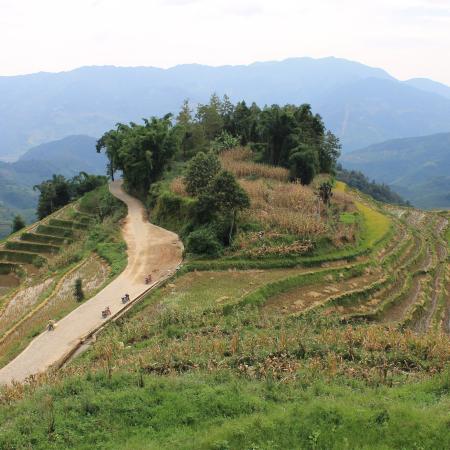
Visito Yakou todos los años desde 2015, y cada vez es mejor. Siempre me atrae volver. Antes no era tan fácil acceder a él porque está situado en una zona montañosa remota. En 2011-2012, el gobierno local estaba entrando en la última fase del proceso de candidatura a la Lista del Patrimonio Mundial (PM). Como parte del procedimiento, el equipo encargado de redactar la candidatura quiso seleccionar varios pueblos que pudieran ser representativos de distintas tipologías a diferentes altitudes. En una imagen de satélite, encontraron Yakou. Era un típico pueblo de montaña que poseía elementos integrados de un pueblo tradicional hani. Pero en aquella época, el pueblo era extremadamente pobre. Sólo se podía llegar a pie desde la carretera al pie de la montaña. El equipo llegó allí un día de lluvia y descubrió que es rico en recursos hídricos, incluso en un año de sequía generalizada. A través de la investigación, los investigadores locales descubrieron que el pueblo aún mantenía el sistema tradicional de gestión del agua, muy importante para mantener un suministro de agua suficiente. Pero, por desgracia, algunas fuentes tradicionales ya estaban siendo abandonadas porque los aldeanos pensaban que estaban anticuadas. Por ello, el equipo y el gobierno local decidieron llevar a cabo un proyecto de restauración para ayudar al pueblo a mantener sus tradiciones. Para animar a los aldeanos a participar en este proyecto, construyeron una carretera para unir el pueblo con la autopista principal. Tras varios años de esfuerzos, el entorno de la aldea mejoró. Debido al éxito de la restauración del bosque acuático, otras aldeas le siguieron en la recuperación de sus sistemas tradicionales de gestión del agua para resolver problemas relacionados con la sociedad, la cultura y el suministro de agua, que los sistemas modernos de administración no eran capaces de abordar. En 2018, entrevisté al jefe de la aldea. Ahora, está aliviado y se convirtió en inspector del patrimonio con una subvención de 1.000 RMB (yuanes chinos) mensuales. Ese año, pude sentir cómo este pequeño y tranquilo pueblo, alejado de la ciudad, se vuelve más limpio y, cómo sus productos agrícolas, incluidos el arroz, el pescado y las frutas, se venden a las grandes ciudades a través de una plataforma de comercio electrónico. Además, gracias a la buena conservación del sistema tradicional de gestión del agua, Yakou atrae poco a poco a más visitantes, los aldeanos obtienen ingresos alternativos y se convierte en el mejor caso para estudiar el sistema de gestión del agua dentro de WH. El agua fluye con los cambios estacionales... Creo que si la PM puede ayudar a la gente a crear una vida mejor, merece la pena emprender el proceso". (Yuxin Li, becaria de investigación)

